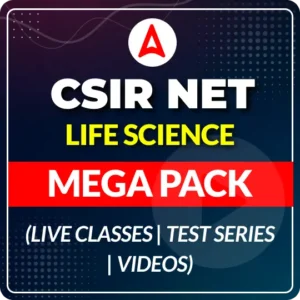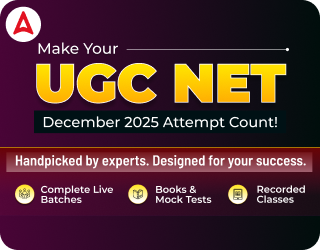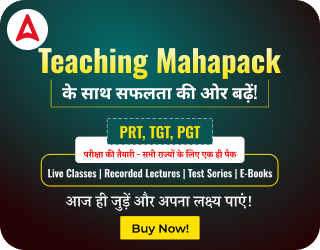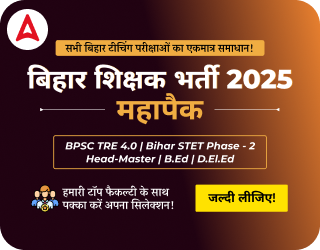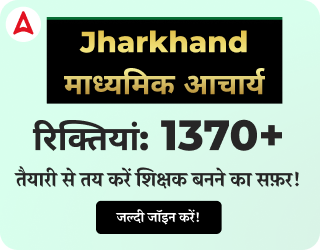Table of Contents
Environmental Studies is a comprehensive field that encompasses various branches of science, such as chemistry, physical science, life science, agriculture, health, and sanitary engineering. This intriguing subject plays a significant role in CTET and other State TET Exams, featuring 30 questions. The Environmental Science section in these exams is divided into two parts: Subject Content, accounting for 15 marks, and EVS Pedagogy, also worth 15 marks. To excel in the CTET Exam, it is recommended to study the NCERT books from classes 1 to 8 thoroughly. In this article, we will provide an introductory overview of EVS Pedagogy to aid your preparation.
Tools and Techniques of Evaluation
Tools and techniques of evaluation are key parts of Continuous and Comprehensive Evaluation (CCE). The information gathered should be presented in scores, grades, or descriptive terms. In CCE, assessments should cover both academic (scholastic) and non-academic (co-scholastic) aspects, which are influenced by the learning environment and culture of the institution.
Achievements can be assessed in different ways:
- Based on the learners themselves, such as their progress, strengths, and learning gaps.
- Based on set criteria, like the expected level of learning and required skills.
Tools are used to collect data and information, such as questions, observations, tests, inventories, and document analysis. For tools like observation, specific situations are necessary—for example, observing students during debates, project work, or assignments. Teachers can also observe students during written exams or while working on a project.
Tools and Techniques of Evaluation
Multiple tools can be used for assessment. Assessment tools can be standardized and non – standardized, which are as follows:
- Standardized tools: have the attributes of objectivity, reliability, validity and quality of discriminating between a high and low performer. Different types of validities, e.g. construct, content and concurrent validity take care of balance and relevance. Speed is a factor in some tests, but not a common element in all tests. Psychological tests and inventories like intelligence and aptitude tests, interest and study habit inventories; attitude scales etc. have those properties.
- Non – standardized tools: are teacher made tests, rating scale, observation schedules, interview schedules, questionnaire, opinionnaires, checklists etc.
Questions
Questions are the most commonly applied assessment tool for finding out what children know, think, imagine and feel. A teacher, in the course of teaching, comes to know of learning difficulties in children by asking questions. Questions as a tool are primarily used in examinations. Questions must have some important characteristics.
- Objective Based: A question should be based on pre – determined objective and should be framed in a way that it tests the objective effectively.
- Instructions: It should specify a particular task through the instructions. For this, appropriate directional words should be used and structured situations should be given.
- Scope: It should indicate the limit and the scope of the answer (length of the answer) in accordance with the estimated time and marks allotted to it.
- Content: The questions should assess the same area of content which it intends to assess.
- Language: A good question is framed in a clear, precise and unambiguous language, well within the comprehension of the students.
- Difficulty Level: A question should be written keeping in view the level of the students for whom it is meant. The difficulty of the question depends upon the ability to be tested, the content area to be tested and the time available to answer it.
- Assessing Power: A good question must assess between the bright students and the other students.
- Scope of the Answer: The language of the question should be specific and precise so that the scope of the expected answer is clearly or defined.
- Value Points: Value points or marks carried by a question as a whole and also its sub parts should be clearly mentioned.
Form of Questions
The form of questions depends on the objectives and the content area to be tested. Some forms are better than the others for testing certain abilities. A good question paper should have the questions based on
- Remembering: e.g. How many…? , Can you name…?, Who spoke to…?, What happened after?
- Understanding: e.g. How would you explain…?, Who do you think…?, Can you clarify….?
- Applying: e.g. Which factors would you change if…?, From the information given, can you develop a set of instructions about…?, Do you know of another instance where…? etc.
- Analyzing: e.g. Which events could not have happened …?, How is… similar to …?, Why did …. Changes occur?, What was the turning point?, What was the problem with …?
- Evaluating: e.g. Is there a better solution to …?, What are the alternatives …?, What are the pros and cons of …?, How effective are …?, Do you think … is a good or bad thing?
- Creating: e.g. Can you design a ….to …?, What would happen if …?, Can you see a possible solution to …?, Can you develop a proposal which would ..?
Types of Questions
The answer may vary from one word to several paragraphs. Such types of questions are also called as ‘free – response’ questions. Supply – type questions may be divided into four categories as follows
Essay Type Questions:
The term essay implies a written response which is a sustained form of writing. The student is allowed to have freedom with respect to wording, length and organization of the answer. A distinction should be made between the essay type question used to measure knowledge and the essay type question employed to test writing skills in languages which is called a writing task. These abilities are:
- Select relevant facts from the body of acquired knowledge. Identify and also establish relationships between various aspects of knowledge.
- Weigh the proof with respect to implications of the gathered information.
- To organize, analyze, interpret facts and other types of information to draw inferences.
- Adopt an indigenous or original approach to solve a given problem.
- Defend one’s point of view through facts, data and suitable arguments. Critically examine the degree of adequacy, accuracy and relevance of the available information in a given situation.
- Appreciate a problem at both the macro and micro levels.
- Conceive, design and suggest new and innovative approaches for tackling a given problem.
- Constructing Essay Type Questions: Essay type questions usually begin with such terms as ‘discuss’, ‘explain’, ‘evaluate’, ‘define’, ‘compare’, ‘contrast’, describe’ etc. Essay type questions are good, when the groups to be tested is small and limited time is available for test preparation. It is also quite suitable to test written expression
Short Answer Questions
- Some characteristics of short answer questions are:
- Short answer questions can be used profitably in all tests
- It can be used to test almost all the objectives of teaching
- It helps students to develop the ability of organizing and selecting relevant facts.
- It can be scored more objectively than the essay type questions and thereby ensure reliability These questions help in covering more syllabus because more number of questions can be put in lieu of one – essay type question.
- This improves the validity of the question paper.
Very Short Answer Questions
Characteristics of short answer questions are Very short answer questions are those which have one specific testing point and can be marked quite objectively. More content can be tested through these questions and more reliability and validity can be ensured. It helps in testing knowledge of the examinee by asking them to supply a word, phrase, figure or a sentence which is required for answering the questions. It can be answered in one word to one sentence. It mostly takes one to two minutes to answer and the mark allotted may be one mark. Very short answer questions can be used profitably in all the school subjects.
Objective Type Questions
In these type of questions, students have to answer them by selecting the correct answer among the provided choices. These may be divided into alternative response type, matching type and multiple choice type questions etc.
Observation
Information about a child (their behavior) can be collected in ‘natural settings in and outside the classes through observation. Other information can be collected through planned and purposeful observation of students during activities and tasks. Observations can be used as a tool of assessment in a variety of situations. Techniques like debates, elocution, group work, practical and laboratory activities, projects, in play fields and school prayers, in clubs and festivals can be used. Whereas observation can be biased and subjective, such errors and risks can be substantially reduced by using an observation schedule. Some of the advantages of observation technique are given below.
- Recognize and identify the various aspects of students’ personality development.
- Recognize and identify the individuals as well as groups.
- Recognize and identify on a continuing basis at varying time periods.
- Recognize and identify the students’ performance and knowledge based on an ‘on – the – spot record’.
- Over time, a pattern of interests, aptitudes etc. emerge creating a comprehensive picture of the student.
- Concerns and risks in observation as an assessment tool.
- Jumping to conclusions based on one or few observations.
- Skill of the observer determining ‘what’ is observed.
- Lack of sensitivity and objectivity in the way the observation is done.
- Observations in one situation and not across time and different activities and settings.
Tests and Inventories
Tests (oral) should not be used for content or skills that can be tested through written examination. Oral tests being individual tests require more time than group written tests. Oral tests are best suited to assess the depth of learning where a student has difficulty in written expression. Oral tests and examinations
- Allow the learner to participate in the learning assessment process.
- Help to test listening and speaking skills.
- Test certain verbal abilities like fluency, expression and accuracy
- Test depth of learning of the students through probing questions Oral tests also require previous planning.
Questions should be pre – defined and documented by the teacher. The questions should be arranged in order of difficulty. Wherever probing is necessary, probable probing questions should also be written down in advance. For each question, the expected answers, the value points and the manner of presentation should also be written down. For objectivity, students’ answers should either be recorded on a digital (or otherwise) recorder or recorded on paper.
Checklist
The concept of checklist has been provided earlier under questions. However, checklists can be used in several other areas of assessment. e.g. as a part of life skills, whether a student can dress up neatly suitable to the occasion or a student can confidently address the students during the school prayer. Checklist is used where answer is in either ‘yes’ or ‘no’. There may be a possibility of confusion. Checklists can be filled only by collecting the information by observing or questioning or by document analysis. Hence, checklist is primarily an instrument of data recording and documentation.
Rating Scale
Rating scale is used wherever a response or a learner behaviour is likely to be in a continuum, from excellent to bad or from satisfactory to unsatisfactory.
Anecdotal Records
Anecdotal records derive its origin and meaning from the word ‘anecdotes’, brief events and episodes. An anecdotal record is the observed behavior of a student. It is a record of some significant episode in the life of the student that sheds light on the conduct, thinking, skills and capabilities revealing significant features and characteristics about his/her personality.
Document Analysis
Record or document analysis is extensively used in research. The significance of this technique is with regard to assessment of students on the basis of documents e.g. assignments, projects, journals in science, geography etc. In a way, this technique is also used to evaluate answers to essay type questions. The accessor, here searches and identifies the main points, arguments, illustrations and examples, derivations and numerals to justify the concept and its explanation etc.
Portfolio
It is the collection of evidences of students’ work over a period of time. It could be day – to – day work or selection of the learner’s best piece of work. Painters and commercial artists often use portfolios to demonstrate their skills and quality work before the selection committees.
Quizzes, Competitions
Quizzes and competitions are quite common place activities today in electronic media, TV in particular. This kind of assessment usually turns out to be joyful. Besides testing the knowledge of the participants, it helps in building collaboration and team work in group events.
Assignments
Theme based tasks to be completed as classwork or homework and can be open ended or structured. Some could be based on contexts outside textbooks.




 Phases of Teaching - Stages of Teaching ...
Phases of Teaching - Stages of Teaching ...
 स्वर व व्यंजन - �...
स्वर व व्यंजन - �...
 UP TGT Sanskrit Syllabus and Exam Patter...
UP TGT Sanskrit Syllabus and Exam Patter...
